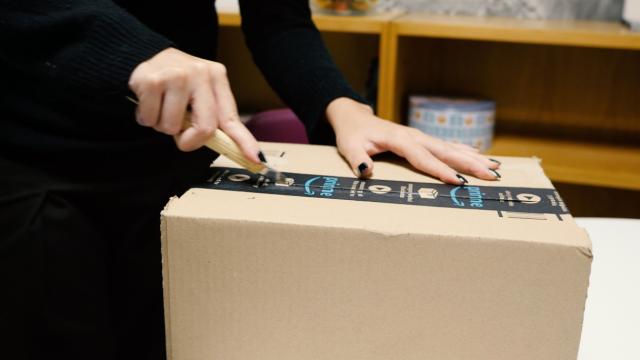Decluttering is not very useful if you keep buying new stuff, and I say that as someone who is always in the process of doing both. That’s where the viral “one in, one out” method comes in handy. On TikTok and Instagram, you can see examples of cleaning influencers sharing how and why setting rules around what must go when something new comes in is so beneficial—but keep in mind that there are a few different (and effective) ways to do this.
What is the “one in, one out” decluttering trend?
The concept is what it sounds like here: When you get something new, throw out or donate the old version in your home. I’ve been doing this for a few months, periodically purchasing higher quality shoes and throwing away their cheap approximations in my existing collection.
The way I do it works fine, as I first find what I want to buy online, then get rid of the crusty old version once the new treasure arrives. But in the video above, you’ll see an even better method: Make the decision about what has to get tossed before buying anything new. Consider what can be disposed of and if you really need to replace it. If the answer is yes, go for it; but if the answer is no, why not try getting rid of the old thing and not replacing it?
One in, two (or more) out
The thing about one in, one out is that it doesn’t actually reduce the amount of clutter in your home—it keeps it the same. It’s a good preventive measure that can stop you from accumulating too much, but it doesn’t actually declutter. You know what does? One in, two out. Hell, make it three out. This strategy is gaining popularity on Reddit and other social media sites where decluttering-minded people compare tips and tricks, largely because it actually does help declutter.
When bringing in something new, set a goal to get rid of more than one other thing. You can start small with two, but escalate your efforts to three, four, or more. Switch it up, too, depending on what you’re bringing in. If you’re buying a fancy new espresso machine, consider getting rid of your little coffee pot, your filters, and two random kitchen items you don’t use anymore, since the new machine is so large. If you’re bringing in something small, like a new mug, you can keep your outgoing number small, too, maybe just getting rid of two other mugs.
Don’t stress over how much you’re going to can. Just focus on making sure the outgoing number is bigger than the incoming one, even if only by one.
One in, one out: remastered
All of that said, there’s a way to combine the two versions into one perfect version of one in, one out. It’s shown in the Instagram reel below:
No matter what you’re buying, it almost certainly comes in some kind of container—and that container is going to be your “one” outgoing thing. When you make a purchase from Amazon, for instance, it comes in a box. You might have bought one item, but that whole box should be filled with things you need to toss. One thing in, one box out. For a real challenge, try this the next time you go shopping in real life, too: Fill the shopping bag to the brim with things you don’t need anymore and get rid of it before putting away whatever came in it.
By reframing one in, one out this way, you’ll accomplish the goal of getting rid of multiple things in exchange for one new thing, but you won’t stress too much about how many old things you have to get rid of. Just fill the container and call it a day. Then, enjoy your new purchase, guilt-free.

Leave a Reply
You must be logged in to post a comment.